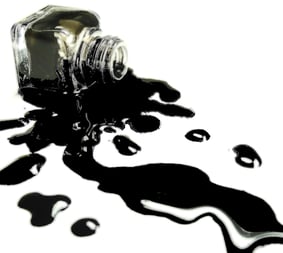 Printer ink may not seem like it would pose a combustible dust hazard, but the ingredients to make ink have been found to blame for a dust explosion. The Chemical Safety Board recently released their report for the investigation of a 2012 explosion at the U.S. Ink plant in New Jersey. The report found that the explosion, which injured seven employees, was caused by the improper installation of a dust collection system. The dust collection system was so flawed that this explosion occurred only four days after it began being used.
Printer ink may not seem like it would pose a combustible dust hazard, but the ingredients to make ink have been found to blame for a dust explosion. The Chemical Safety Board recently released their report for the investigation of a 2012 explosion at the U.S. Ink plant in New Jersey. The report found that the explosion, which injured seven employees, was caused by the improper installation of a dust collection system. The dust collection system was so flawed that this explosion occurred only four days after it began being used.
Ink is made by mixing small particles of carbon black or Gilsonite, which are both combustible, with a liquid and binder. The dust collection system was supposed to remove the powdered materials from the air and ventilation units, but in effect just made the situation worse. Within a day the system began to back up with sludge and ink powder it was supposed to be removing, as well as dirt and dust from the production floor. The design did not come close to NFPA requirements, and had airflow much lower than what industry standards recommend.
This explosion shows the importance of having OSHA finalize their combustible dust regulatory standard, an issue that originally was high-priority but has consistently been delayed and shelved as a long term action item. CSB Chairperson Moure-Eraso explained, “Although OSHA’s investigation of this accident deemed it a combustible dust explosion, it did not issue any dust-related citations, doubtless hampered by the fact that there is no comprehensive combustible dust regulatory standard”
Without a federal combustible dust standard that can be enforced all requirements are essentially voluntary, which is putting workers at an unnecessary risk. Moure-Eraso details how important this is by saying “A national combustible dust standard would include requirements to conform to what are now largely voluntary industry guidelines and would go far in preventing these dust explosions.”
Current statistics show that a combustible dust explosion happens 2-3 times per day in facilities across the U.S., with over 2.5 million facilities at risk. Clearly, this is an issue that should not be shelved and left for later, but needs to be dealt with immediately.
Update: After the CSB report was published outlining the lack of enforceable regulations regarding combustible dust U.S. Senator Cory Booker has sent a letter to OSHA calling for a standard to be created.
Senator Booker wrote, ““The importance of addressing workplace safety for our nation’s workers is too great to ignore. I echo the recommendation of the U.S. Chemical Safety and Hazard Investigation Board that OSHA issue a standard designed to prevent combustible dust fires. By implementing an industry wide safety standard for combustible dust, we can prevent future workers from putting themselves in harm’s way.”
His full letter to OSHA can be found HERE.
Update #2: Sun Chemical Corp., the parent company for U.S. Ink, sued the company that installed the faulty dust collection system in Newark Federal Court on July 1, 2013 and was seeking treble damages for consumer fraud. After a long trial, a federal judge refused to dismiss the case this year based on defendants’ argument that the consumer fraud claim was subsumed by the New Jersey Products Liability Act.
Information about the lawsuit can be found HERE.
Contact a trained professional at Hughes Environmental immediately if you’re concerned about combustible dust in your facility.

